


Key Takeaways
Successful digital SAT preparation begins with understanding the SAT sections, question types, scoring, and timings. The more you know these details, the better your chances for a higher SAT score. A higher score can simplify your college admissions process.
This blog provides an in-depth look at the digital SAT sections. Reading this blog will help you answer questions like:
- What is the structure of the SAT exam?
- What are the sections in the digital SAT?
- How many questions are there in the digital SAT?
- Does the digital SAT have only multiple-choice questions?
Why learn about the Digital SAT sections
Isn't the SAT just language and math questions? Why should you bother about the details?
A high score on the SAT begins with a detailed understanding of the test.
Saying that the SAT contains nothing beyond some language and math questions is like saying that flying an aeroplane is just about manoeuvring the joystick.
Sure, handling the joystick is important while flying and steering an aeroplane. But the pilot must also work with many other switches and controls. It's essential, not just important.
Just like you can fly an aeroplane only if you successfully work all the switches and controls, you can get a decent composite score on the SAT only if you understand the digital SAT sections well.
The SAT test: Quick basics
Here are the five basics you need to know about the Digital SAT right off the bat:
- The new SAT is conducted digitally, i.e., over digital devices such as laptops and iPads, which is why it is called the digital SAT.
- The SAT has 98 questions and will last 134 minutes. The total test score will be between 400 and 1600.
- The SAT has two sections. Each of them has two sub-sections called modules.
- Students writing the SAT on the same day will see different but comparable questions. This ensures there's no cheating even while all scores remain comparable.
- The digital SAT is adaptive. That means the test will adapt to the student's skill level in real-time and provide questions accordingly.
The layout of the digital SAT screen
The design of the SAT is simple and minimalist, showing only relevant information.
For instance, the general instructions will be displayed on your screen before the test begins. Once the test starts, you only see the questions, the answer choices, and the appropriate tools, if any, to help you answer the question.

The above shows what a math question with multiple choices looks like. Naturally, the screen layout is slightly different for other types of questions.
However, here are a few things to note:
- All questions of the multiple choice type will have four answer choices.
- Multiple-choice questions have exactly one correct answer.
- The timer displays the remaining time, which you can choose to hide.. You can get an alert when there are only 5 minutes left.
- The new SAT is shorter than the older SAT by about 45 minutes.
The Digital SAT sections - An introduction
As mentioned earlier, the Digital SAT (sometimes called DSAT) has two sections with two modules each. That means you answer a total of four modules.
The scores range from 200 to 800 for each section. You will receive a score for both the sections. Hence, your total score will range from 400 to 1600. Scores increase in 10-point increments, which means you can receive a score of 570, 410, or 620 but not 624 or 433.
The language section (called the Reading and Writing section) will have reading passages. You'll be asked to use these short passages to answer questions on various language skills, including identifying the author's argument, making the correct word choice, choosing a phrase acceptable under English grammar rules, and more.
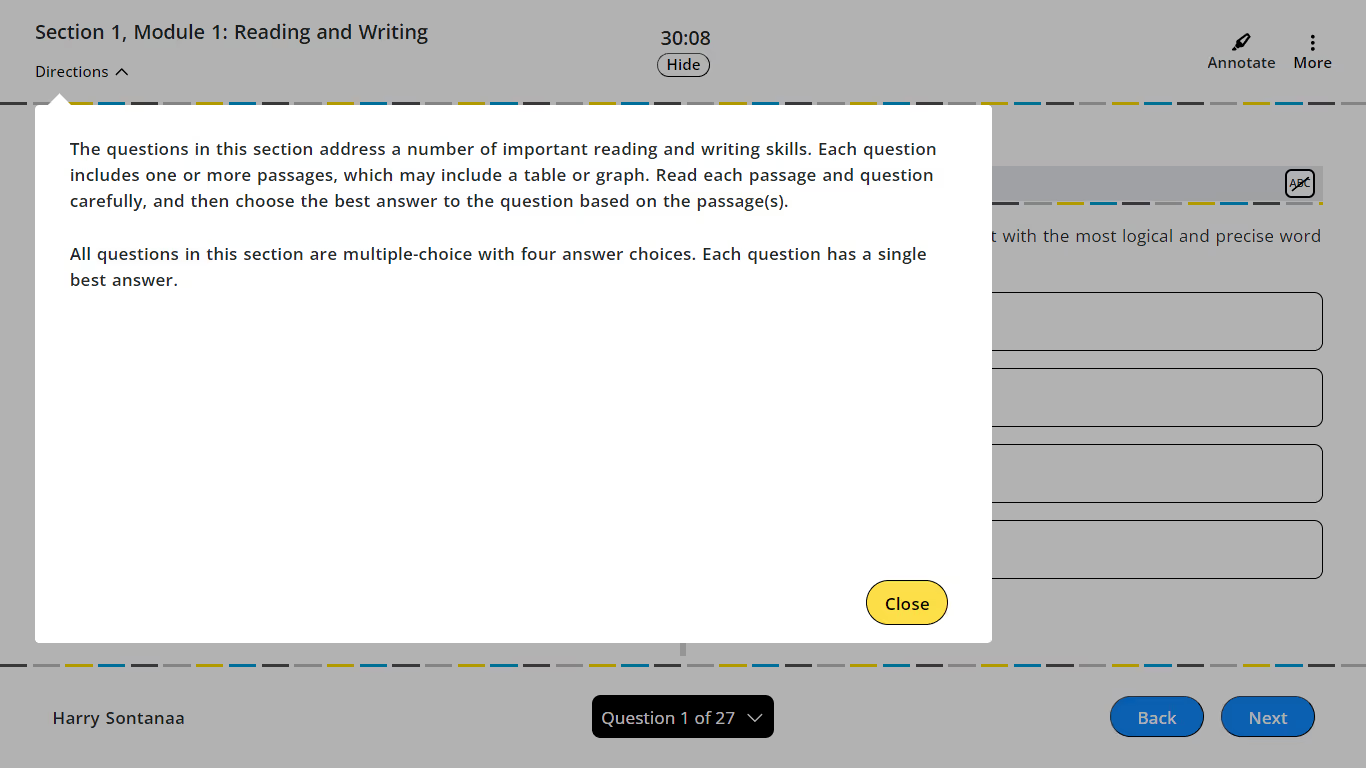
After you're tested for language, math follows. The math section tests skills in applying mathematical concepts, problem-solving, and data analysis.
The Evidence-based Reading and Writing section
- You’ll see only one question at a time.
- If the question deals with a passage, you’ll see the passage on the left of your screen and the question on your right.
- The answer choices will also appear on your right, just below the question.
- Occasionally, the test will show you a table or a graph and ask you to interpret it. There won’t be any calculations involved, though. Like the screenshot below, the table or graph will be on your left.

The Math section
- The section begins with instructions.
- You’ll see only one question at a time.
- The answer choices will be right below the question. The question and the answer choices will be displayed in the center of the screen.
- You’ll see the instructions on your left for Student Produced Response questions. You will see the question and the box to enter your answer on your right.
- A calculator and a reference sheet with formulas will be available throughout the test.
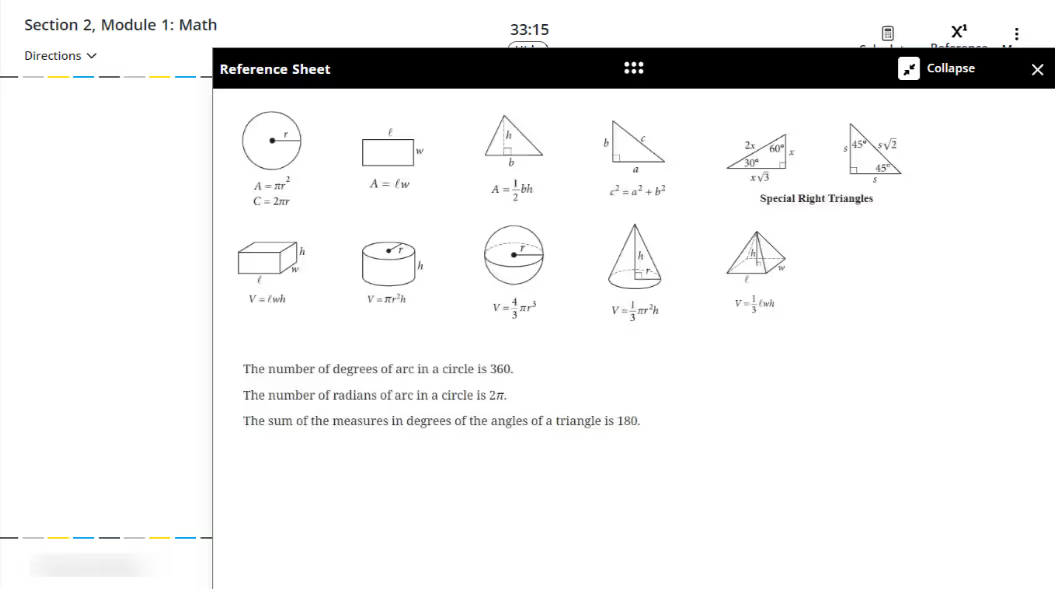
The Digital SAT sections
The first section of the SAT is the Reading and Writing section. After you complete both the modules of this section, you will be served the two modules of the Math section.
Remember, there's no penalty for a wrong answer. So feel free to make intelligent guesses when you are not sure about the answer. Within a module, you may skip a question and return to it later. You may even change your answer if you wish to.
It’s important to remember that while you can move freely from one question to another in a given module, you cannot switch between modules. Once you complete and submit a module, you cannot return to it. That’s because the Digital SAT is adaptive (more about it later).
The Reading and Writing section
The Reading and Writing section is a language test with two modules. Each module has 27 questions. The first module is called the base module, while the second is called the adaptive module. You get 32 minutes to complete each module. You may move to the second module before the time expires. However, you may not go back to the previous module.
The base module has easy, moderate, and difficult questions. They are roughly equal in number. These questions test the candidate’s ability to apply vocabulary in context, identify the crux of given passages, and draw valid conclusions.
Average time
On the average, you have about 1 minute and 11 seconds for every question. Of course, you may spend more time on some questions and less on others, because the total time for the module is fixed.
Size of passages
The older version of the SAT used to have a long passage followed by a set of questions. The digital SAT will have one or two passages for each question. Which means the passages are considerably shorter.
Domain distribution
The questions in this section belong to exactly one of the four domains specified below:
Craft and Structure: You'll see about 13 to 15 questions - about 28% - from this domain.
Information and Ideas: Expect about 12 to 14 questions from this domain. That'd be about 26%.
Standard English Conventions: The test will have about 12 to 15 questions (about 26%) under this domain.
Expression of Ideas: About 8 to 12 questions (20%) represent this domain.
Different categories
The Reading questions fall under one of the seven categories:
- Vocabulary
- Purpose
- Dual Texts
- Retrieval
- Main Idea
- Claims
- Conclusions
Against that, the Writing questions fall under one of the three categories given below:
- Vocabulary
- Transitions
- Rhetorical Synthesis
Here’s a table that captures the Reading and Writing section of the Digital SAT:
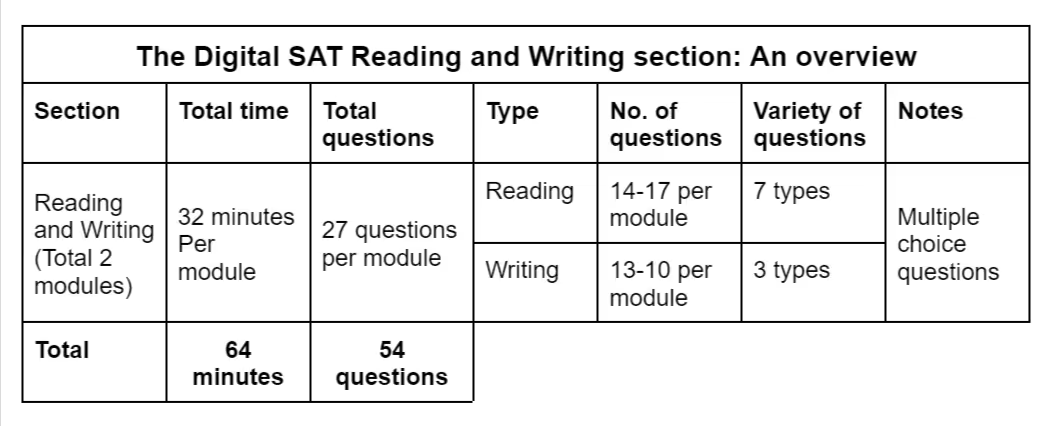
Order of the questions
The questions will always be in the order of the categories given above. However, not every test contains all the above categories of questions. For instance, your test may not have a question on ‘Claims’, while your friend Nick may not have any question on ‘Retrieval’.
The College Board has removed the optional essay from the SAT. Hence, at a broad level, the SAT reading test forms the crux of the language section.
Additional information
Word count: Each question will have a passage with a word count of 25 to 150 words.
Pretest questions: Of the 27 questions in each module, only 25 questions count towards your score. The College Board calls them operational questions. The remaining 2 questions, called pretest questions, do not count towards your score.
During the test, however, you won't know which 2 questions are pretest questions. So do your best with all the 27 questions.
Math section
Like the Reading and Writing section, the Math section has two modules. Each module tests your math skills through 22 questions. You have 35 minutes within which to attempt each module. Here too, you will have 2 experimental questions that do not count towards your score.
Here's an overview of the Digital SAT section of math:

All questions assess your problem-solving skills. The SAT math covers high school arithmetic, algebra, geometry, data analysis, and advanced math with basic trigonometry. Although the order of topics is random, the math problems are always arranged in increasing order of difficulty.
Question types
Some math questions are multiple-choice questions, while others do not have answer choices. Instead, there will be a text box next to the question where the student may enter their response.
The official College Board document says roughly three-fourths (75%) of the questions are multiple-choice. The remaining questions, about 5 to 6 in number, are officially called Student-Produced Response questions. They replace the grid in questions from the earlier SAT.
You need to follow specific instructions while answering the Student-Produced Response questions. For example, fractions will not be interpreted as mixed fractions. Hence, 2 5/7 will be construed as 25/7. Instructions will be displayed on the left side of your screen.
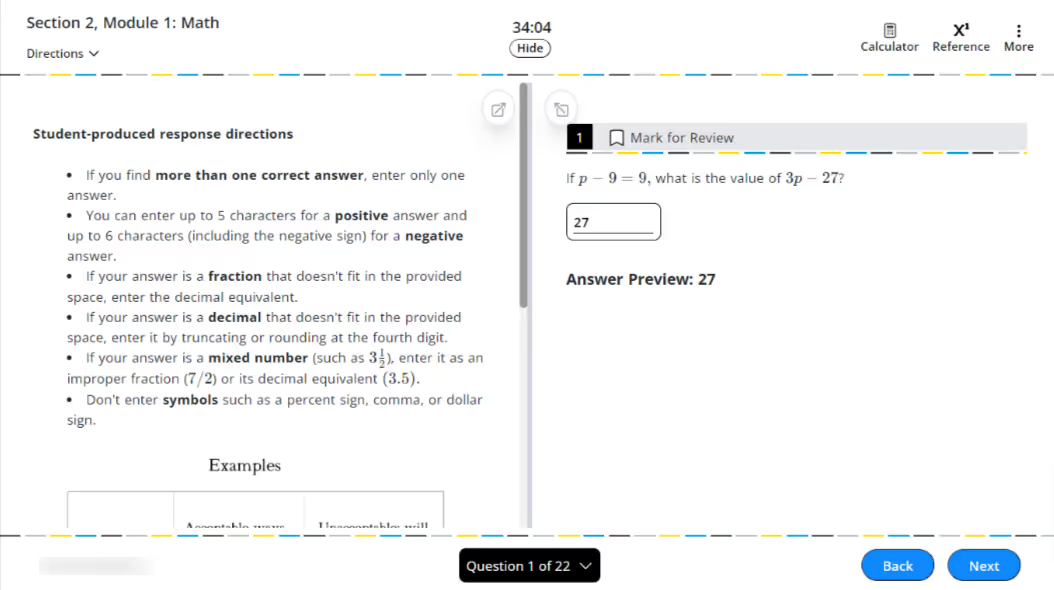
Familiarize yourself with these instructions when you attempt practice tests. It will save you time and avoid confusion on test day.
Domain distribution
The math section of the SAT will have questions from the four domains specified below:
Algebra: Expect to see 13 to 15 questions from Algebra. It forms 35% of the total questions.
Advanced Math: Some 13 to 15 questions will asked from advanced math. That's another 35% of the total.
Problem-Solving and Data Analysis: About 15% of questions - between 5 and 7 - belong to this domain.
Geometry and Trigonometry: You'll have 5-7 questions (15%) from geometry and trigonometry.
If you're appearing for PSAT 8/9, you won't have any trigonometry questions.
Average time
You have 70 minutes to answer 44 questions. That comes to 1 minute 35 seconds for each question on the average. Some questions may need more time than this, so you want to shave as many seconds off the more straightforward questions as possible.
Additional information
The Digital SAT math doesn't test your ability to remember complex formulas; it tests if you can apply the correct formula to a given question. Also, while reading a math question, be sure you understand it right the first time. Because if you need to read every question more than once, you'll be wasting precious time.
The adaptive modules
Sure, the Digital SAT is a standardized test that assesses students' reading, writing, and math skills. But it's different from other tests because it is adaptive.
So, what does an adaptive test mean?
Simply speaking, the test adjusts in real time based on student performance. If the student performs above average in the base module, the test algorithm will serve a more difficult second module. On the other hand, if the student performs average or below, the test will serve the student an easier module.
Let's say Will and Aayra take the SAT on the same day. Will gets only 7 answers correct in the base math module. This is below the benchmark set for the test sections, so he will be given an easier adaptive module. There, he gets 16 answers correct.
Against that, Aayra gets 16 answers correct in the base module. That's above the benchmark set for the section, so the adaptive module for Aayra contains difficult questions. There she gets 7 answers correct.
Note that both Will and Aayra have 23 correct answers. However, because Aayra did better in the base module, she proved she was more competent with the SAT math questions than Will is. Hence, she will be rewarded with a better score.
Remember, your maximum total score with an easy adaptive module is less than the minimum total score with a difficult adaptive module. With comes the SAT scores, your performance in the base module is a critical component.
In conclusion
The test structure directly and indirectly evaluates various skills.
For example, when the test asks you to choose the best words to complete a sentence, you draw upon your editing skills in the background. Or when the math section displays multiple possible answers and asks you to choose the correct one, you need to pay attention to aspects like units.
More importantly, the digital SAT rewards you if you perform better in the base module. That's a clear message that the College Board wants you to work with a strategy. Put differently, the College Board encourages students to work smarter instead of harder.
Now that you better understand the SAT sections, you're probably eager to learn about your Bluebook app test scores. We've made it super easy: just upload your basic scores details and you'll get highly detailed reports on your performance. Use these analytics to prepare better and take your SAT scores to the next level.
Frequently asked questions

Tutors Edge by EdisonOS
in our newsletter, curated to help tutors stay ahead!
Tutors Edge by EdisonOS
Get Exclusive test insights and updates in our newsletter, curated to help tutors stay ahead!








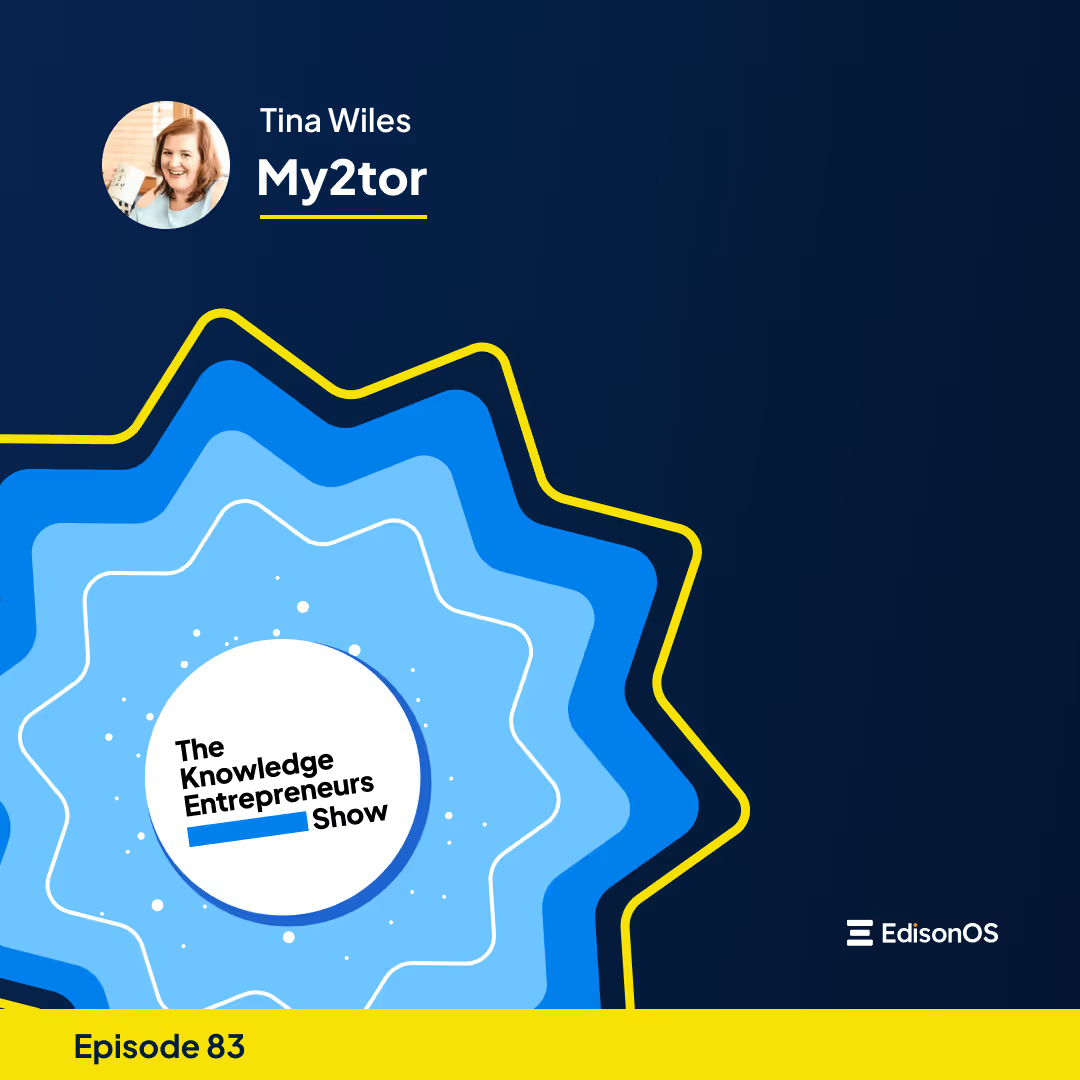



.png)
.webp)
